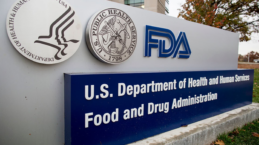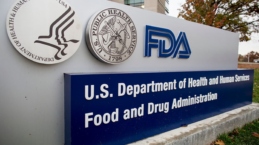

insights
Regulations, Ripple Effects & Unintended Consequences
The Colorado Bioscience Association held their Annual Regulatory Affairs Symposium on January 23rd in Broomfield, Colorado. This annual event brings together bioscience industry professionals in Colorado and from around the country. The topics discussed covered upcoming regulatory trends on the horizon for life sciences, trade agreements and their impact on medical devices, a panel discussion of distinguished speakers from local Colorado cutting edge startups including SomaLogic and Sana Health, and local branches of national companies such as Editas Medicine.
One fascinating discussion presented by a senior associate at Hogan Lovells centered on the impact of new environmental regulations on ethylene oxide used for medical device sterilization. Ethylene oxide is a primary sterilization agent for stents, implants, tracheostomy tubes, and other medical devices. The FDA reviews sterilization information before sterile medical devices are permitted to be marketed. Changes in a sterilization method, validated process or facility require notification to and approval by the FDA.
In December 2016, ethylene oxide was reclassified by the EPA from “probable” to “known” human carcinogen.
The permissible exposure limit for a 1 in 1,000,000 lifetime cancer risk was lowered to 0.0002 mg/m3. Even though this limit is sometimes more stringent than the naturally occurring background concentration of ethylene oxide, the result of this reclassification dramatically changed the permissible exposure levels and emission levels for this workhorse sterilization reagent for the medical device industry. The ripple effect of this reclassification resulted in the EPA, and numerous state environmental agencies, beginning a crackdown on emissions from medical device sterilization facilities. Often these sterilization facilities are contract facilities that follow the CMO model of providing a specialized service to a medical device company so that the device company does not need to invest in the infrastructure required to perform the sterilization. States such as Michigan, Georgia, and Illinois have begun enforcement of the new emission requirements for these facilities. Since March of 2019, sterilization facilities in these states have begun closing down due to the inability to meet the updated emissions requirements. So far, at least six facilities have shut down either temporarily to update technology to meet the new requirements, or permanently due to the uncertain regulatory environment around this topic.
The impact of the loss of these facilities has led the FDA to issue a statement regarding the Agency’s concern over the potential impact on the medical device supply chain and is working with medical device firms to mitigate shortages and potential shortages in critical medical devices. Furthermore, the FDA has issued two innovation challenges on ways to improve medical device sterilization and reduce ethylene oxide emissions.
Additionally, the FDA announced an Ethylene Oxide Sterilization Master File Pilot Program to help medical device manufacturers address this need. More information on how the FDA is working to address the changing regulatory landscape for ethylene oxide can be found on the FDA’s website here.
The Law of Unintended Consequences states that actions of people, and often government, always have effects that are unanticipated or unintended. Often these are perceived as negative effects, at least in the short term.
Certainly, this is the case in the presence of imminent medical device shortages. However, in the longer term, perhaps through the innovation challenges or regulatory changes, such as is the case here to establish an ethylene oxide master file, a greater good can be achieved through improved technology and reduced exposure. We will continue to see this with regulatory changes, so it is important to be on the lookout for these ripple effects, which can have unintended and unanticipated consequences in our industry. An important strategy for consideration is to view regulatory work from a holistic perspective, not just the FDA or other health authorities, so companies can be best prepared to weather an ever-evolving regulatory environment.




